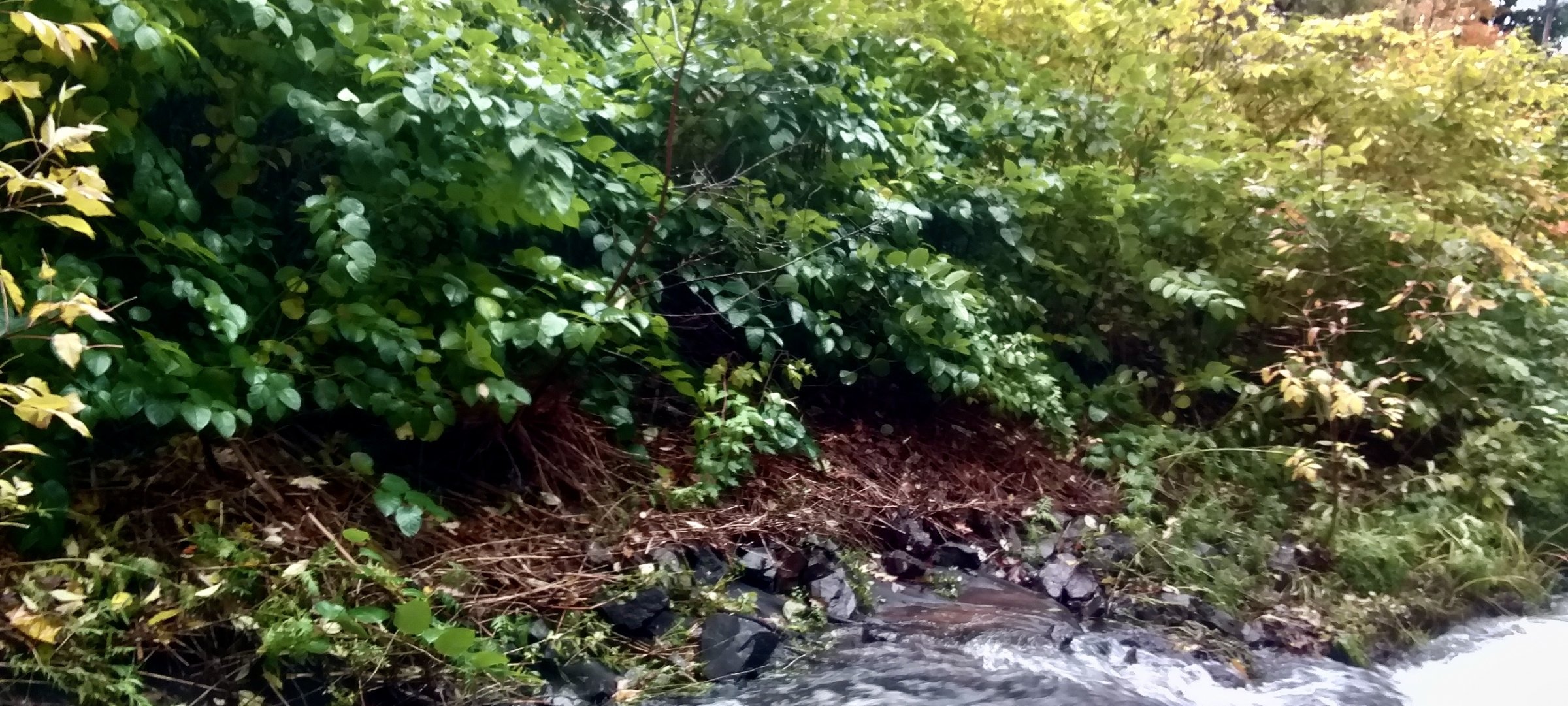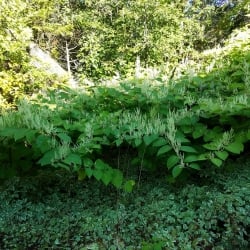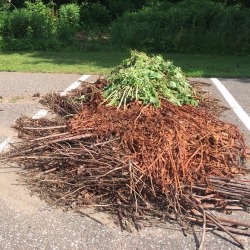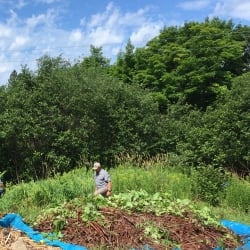Japanese knotweed along the Peepsock stream
Image credit: Matt Kelly

Japanese knotweed along the Peepsock stream
Image credit: Matt Kelly
Japanese knotweed, a terrestrial herbaceous plant that is in the Polygonaceae family, invades along rivers, streams, roads, and in disturbed areas or where dumped. It prefers full sun and rich soils but is able to grow in a wide variety of conditions.
Note: Can hybridize with invasive giant knotweed and produce a species called Bohemian knotweed.
For more information visit Midwest Invasive Species Information Network (MISIN).

Japanese knotweed flowering in the fall
Image credit: Sigrid Resh
Manual Knotweed Management in 5 Easy Steps
Japanese knotweed is very difficult to remove from an area after it has been introduced because of how aggressive it is. It’s able to spread through rhizomes and stem/root fragments. When managing this species, make sure to remove all plant material from soil contact to prevent re-rooting. KISMA has been managing a quarter-acre of Japanese knotweed area in Kearsarge for the past four years with very positive results (see images below).
Note: The purpose of this removal strategy is to starve the rhizome system of any carbohydrates that would be gained by photosynthesis and will require multiple years of surveillance and removal of plant material to be successful.

Japanese knotweed drying on the pavement after cutting
Image credit: Sigrid Resh

Japanese knotweed piled on a tarp to dry away from contact with soil
Image credit: Sigrid Resh
Some popular native alternatives to Japanese knotweed are those from the dogwood genus (Cornus spp.), such as red-osier dogwood (Cornus sericea). These are beautiful native plants that provide a habitat for native pollinators and other native wildlife. Other native understory species are also great alternatives as they can help prevent knotweed spread by filling out areas knotweed could grow in.